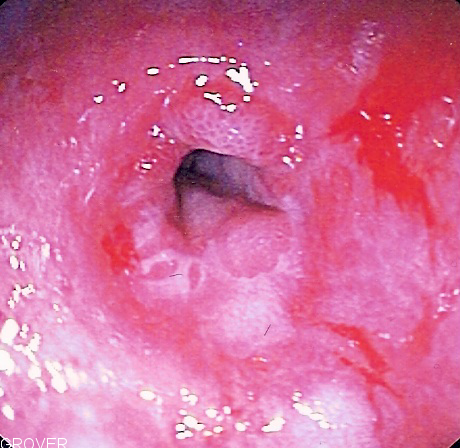Dysphagia endoscopy
|
Dysphagia Microchapters |
|
Diagnosis |
|---|
|
Treatment |
|
Case Studies |
|
Dysphagia endoscopy On the Web |
|
American Roentgen Ray Society Images of Dysphagia endoscopy |
Editor-In-Chief: C. Michael Gibson, M.S., M.D. [1]
Endoscopy
Oropharyngeal Dysphagia
A patient can also be assessed using videoendoscopy, also known as flexible fiberoptic endoscopic examination of swallowing (FEES). The instrument, is placed into the nose until the clinician can view the pharynx and then he or she examines the pharynx and larynx before and after swallowing. During the actual swallow, the camera is blocked from viewing the anatomical structures. A rigid scope, placed into the oral cavity to view the structures of the pharynx and larynx, can also be used, however; the patient cannot swallow.
Esophageal Dysphagia

If there is no suspicion of history of surgery for laryngeal or esophageal cancer, history of radiation or irritating injury, achalasia, zenker's diverticulum, endoscopy can be performed first. Any structural or mucosal abnormality is treated.
A normal endoscopy should be followed by manometry; and if manometry is also normal, the diagnosis is functional dysphagia.